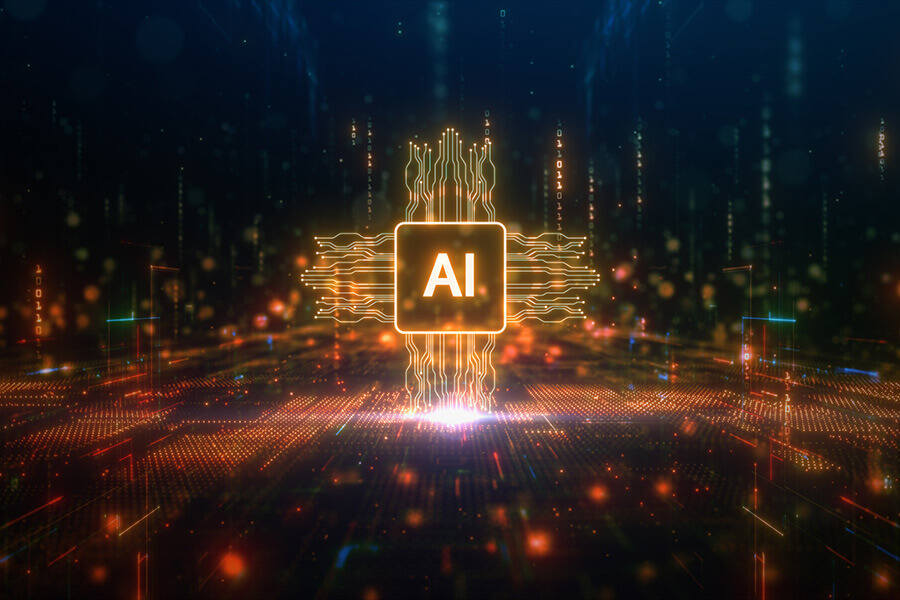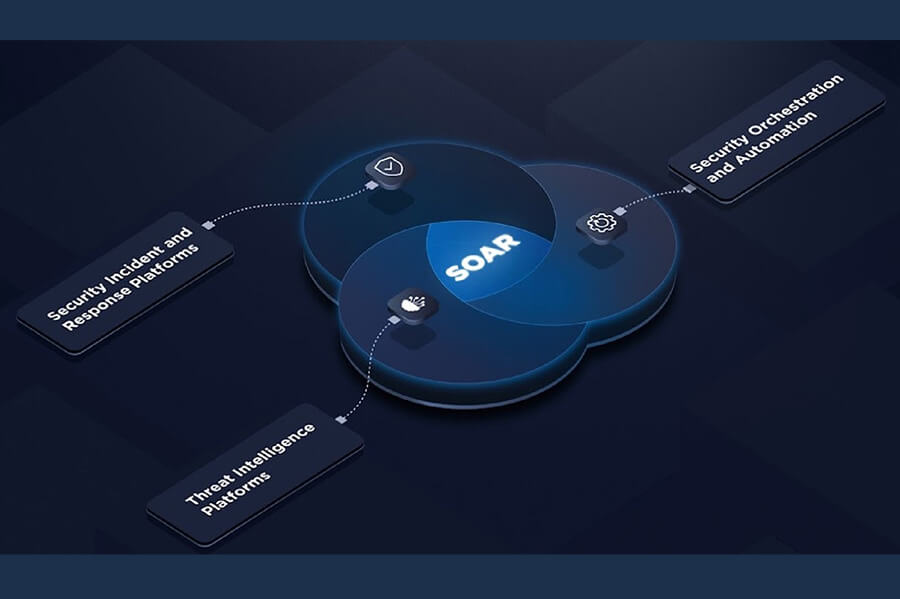Integrating AI Into Legacy Systems: A Comprehensive Analysis for Modern Enterprises
Modern enterprises face a critical decision when considering how to leverage artificial intelligence capabilities while maintaining their existing technological infrastructure. Integrating AI into legacy systems offers significant opportunities to optimize performance and automate processes, but requires organizations to navigate complex technical and strategic challenges. The integration process can unlock substantial operational improvements and competitive advantages when executed with proper planning and strategic oversight.
Legacy systems continue to power essential business functions across industries, yet their outdated architectures often create compatibility barriers with modern AI solutions. Organizations must strike a balance between the need for innovation and the requirements for operational continuity. The complexity spans multiple dimensions, including data management, system compatibility, and maintaining business operations during the integration process.
Success in AI integration depends on understanding both the technical hurdles and organizational factors that influence implementation outcomes. Companies that approach this challenge systematically can achieve meaningful returns on investment while avoiding common pitfalls that derail integration projects. The path forward requires careful consideration of infrastructure limitations, security requirements, and change management strategies.
Understanding AI Integration and Legacy Systems
Legacy systems refer to established computing infrastructure that organizations continue to use despite the availability of newer alternatives. In contrast, AI integration involves incorporating artificial intelligence capabilities into these existing technological frameworks. The process requires careful consideration of both technical compatibility and operational requirements.
Defining AI Integration in Context
AI integration refers to the process of incorporating artificial intelligence capabilities into existing technological infrastructure without replacing current systems entirely. This approach allows organizations to enhance their operations while preserving established workflows.
The integration process typically involves creating middleware solutions that connect legacy systems with AI applications. These connections enable data flow between old and new technologies without requiring complete system overhauls.
Integrating AI into legacy systems requires understanding both technical and organizational factors. Organizations must assess their current system capabilities and identify specific areas where artificial intelligence can provide value.
Standard AI integration approaches include:
- API development to connect legacy databases with AI tools
- Data extraction pipelines that feed information to machine learning models
- Hybrid architectures that maintain legacy core functions while adding AI features
- Gradual migration strategies that replace system components over time
The integration process must account for data quality, security requirements, and operational continuity. Organizations cannot simply overlay AI technology onto existing systems without careful planning and technical preparation.
Benefits of Integrating AI Into Legacy Systems
AI integration transforms existing infrastructure by automating manual processes, enabling data-driven insights, personalizing customer interactions, and providing scalable solutions that drive competitive advantage and measurable ROI.
Increased Automation and Efficiency
Legacy systems gain significant productivity improvements through AI-powered automation capabilities. Organizations can implement AI augmentation to enhance efficiency while maintaining existing workflows.
Machine learning algorithms automate repetitive tasks that previously required manual intervention. Data entry, report generation, and routine maintenance activities become streamlined processes that operate continuously without human oversight.
AI adoption within legacy frameworks reduces operational costs by 25-40% in most enterprise environments. Staff members redirect their focus toward strategic initiatives rather than mundane administrative duties.
Key automation areas include:
- Invoice processing and accounts payable workflows
- Inventory management and supply chain optimization
- Quality control inspections and compliance monitoring
- Customer service ticket routing and resolution
Predictive maintenance algorithms analyze system performance patterns to prevent equipment failures and optimize maintenance schedules. This proactive approach reduces downtime by up to 50% compared to traditional reactive maintenance schedules.
Data-Driven Decision Making
Legacy systems contain vast amounts of historical data that AI transforms into actionable business intelligence. Analytics engines process years of transactional information to identify patterns and trends that human analysts might overlook.
Machine learning models analyze customer behavior, sales performance, and operational metrics simultaneously. Decision-makers receive real-time insights that support strategic planning and tactical adjustments.
AI projects deliver measurable improvements in forecasting accuracy. Revenue predictions become 30-50% more precise when algorithms process historical sales data alongside market indicators and seasonal variations.
Data transformation capabilities:
| Function | Traditional Method | AI-Enhanced Method |
| Sales Forecasting | Monthly reports | Real-time predictions |
| Risk Assessment | Annual reviews | Continuous monitoring |
| Market Analysis | Quarterly surveys | Daily sentiment tracking |
Natural language processing extracts insights from unstructured data sources, including emails, documents, and customer feedback. This comprehensive analysis provides a complete view of business performance across all touchpoints.
Enhanced Customer Experience
AI integration enables personalized customer interactions through existing system interfaces. Chatbots connect with legacy databases to provide instant access to account information, order history, and service records.
Customer service representatives receive AI-powered recommendations during support calls. The system analyzes past interactions and current context to suggest optimal solutions and next-best actions.
Personalization engines use customer data from legacy systems to customize product recommendations and marketing messages. Conversion rates increase by 15-25% when AI delivers targeted content based on purchase history and browsing behavior.
Customer experience improvements:
- Response times reduced from hours to seconds
- First-call resolution rates increased by 40%
- Customer satisfaction scores improved by 20-30%
- Cross-selling opportunities are identified automatically
Predictive analytics anticipate customer needs before issues arise. Proactive outreach and preventive measures demonstrate value while reducing the volume of support tickets.
Scalability and Competitive Advantage
Digital transformation through AI integration offers scalable growth capabilities without requiring a complete system overhaul. Organizations expand operations while leveraging existing infrastructure investments.
AI systems process increasing data volumes and transaction loads without proportional increases in staffing requirements. This scalability supports business growth while maintaining operational efficiency.
Competitive advantage emerges through faster decision-making and improved customer responsiveness. Companies that utilize AI-enhanced legacy systems respond to market changes 3-5 times faster than their competitors using traditional approaches.
ROI from AI projects typically reaches 200-400% within 18 months of implementation. The combination of cost savings and revenue improvements justifies rapid initial integration investments.
Scalability benefits:
- Processing capacity increases without hardware upgrades
- Customer service handles 10x more inquiries simultaneously
- Data analysis speeds improve by 100-1000x
- New market opportunities identified through pattern recognition
Organizations maintain their competitive position by modernizing capabilities while preserving institutional knowledge embedded in legacy systems.
Core Challenges of AI Integration with Legacy Infrastructure
Legacy systems pose substantial technical challenges when organizations attempt to integrate AI capabilities. These obstacles span from incompatible architectures and data silos to performance limitations and heightened security vulnerabilities.
Technical Compatibility and Architecture Barriers
Legacy infrastructure typically operates on outdated programming languages, such as COBOL, FORTRAN, or early versions of Java, which lack modern AI framework support. These systems rarely include built-in API integration capabilities, making communication with AI services extremely difficult.
Most legacy systems follow monolithic architectures that hinder the integration of modular AI components. Modern AI solutions require flexible, microservices-based architectures that legacy systems cannot accommodate without significant restructuring.
Hardware limitations compound these challenges. Legacy servers often lack the computational power, memory capacity, and specialized processors required for AI workloads. Graphics processing units and tensor processing units, which are necessary for machine learning operations, are typically absent from older infrastructure.
Common compatibility barriers include:
- Proprietary database formats that AI tools cannot access
- Outdated network protocols are incompatible with cloud-based AI services
- Legacy authentication systems that block modern API connections
- Inflexible data schemas that cannot adapt to AI input requirements
Data Quality, Silos, and Accessibility
AI systems rely on high-quality, accessible data; however, legacy infrastructure often stores information in isolated, inconsistent formats. Data silos prevent AI algorithms from accessing comprehensive datasets necessary for accurate analysis and decision-making.
Legacy databases often contain duplicate records, inconsistent formatting, and missing values, which can compromise the performance of AI models. ETL processes designed decades ago lack the sophistication to clean and prepare data for modern machine learning algorithms.
Data lakes and centralized repositories remain foreign concepts to many legacy systems. Information typically exists across multiple disconnected databases, file systems, and applications without unified access methods.
Critical data challenges include:
- Inconsistent data formats across different legacy applications
- Lack of real-time data synchronization capabilities
- Missing metadata that AI systems require for context
- Inadequate data governance frameworks for quality control
Organizations often find that 60-80% of their integration effort involves data preparation and cleaning, rather than the actual implementation of AI.
Performance Bottlenecks and Scalability Constraints
Legacy systems operate with fixed resource allocations that cannot dynamically scale to meet the computational demands of AI. Processing bottlenecks occur when legacy infrastructure attempts to handle AI workloads alongside existing business operations.
Network bandwidth limitations prevent efficient data transfer between legacy systems and cloud-based AI services. Latency issues arise when real-time AI processing requires immediate responses, but legacy systems process requests sequentially, resulting in delays and suboptimal performance.
Memory constraints become apparent when AI models require large datasets to remain loaded and perform optimally. Legacy systems typically allocate memory statically, which limits their ability to accommodate variable AI memory requirements.
Performance limitations manifest as:
| Bottleneck Type | Impact on AI Integration |
| CPU Processing | Slow model inference and training |
| Memory Allocation | Inability to load large datasets |
| Storage I/O | Delayed data retrieval for analysis |
| Network Bandwidth | Poor real-time AI service connectivity |
Security and Compliance Risks
AI integration introduces new cybersecurity vulnerabilities when legacy systems connect to external AI services or cloud platforms. These connections create additional attack vectors that legacy security frameworks were not designed to address.
Compliance risks multiply when sensitive data moves between legacy systems and AI platforms. Regulations such as GDPR, HIPAA, and SOX require specific data handling procedures that legacy systems may not adhere to during the integration of AI.
Legacy authentication mechanisms often lack the granular access controls necessary for integrating AI systems. Single sign-on capabilities and role-based permissions, which are essential for secure AI deployment, are often lacking.
Security and compliance challenges include:
- Unencrypted data transmission to AI services
- Inadequate audit trails for AI decision-making processes
- Legacy systems are lacking modern encryption standards
- Insufficient access controls for AI-generated insights
Organizations face potential regulatory penalties when AI integration compromises existing compliance frameworks established around legacy infrastructure.
Overcoming Technical Limitations
Organizations can address technical barriers through strategic API and middleware implementations, advanced data transformation techniques, and flexible cloud-hybrid architectures. These approaches enable seamless communication between AI systems and legacy infrastructure while maintaining operational continuity.
API and Middleware Solutions
APIs serve as the primary bridge between legacy systems and modern AI applications. Strategic use of APIs and middleware facilitates smoother integration by creating standardized communication protocols.
RESTful APIs provide lightweight, stateless connections that allow legacy databases to communicate with AI services without requiring system overhauls. Organizations can implement API gateways that automatically manage authentication, rate limiting, and data formatting.
Middleware platforms act as translation layers between incompatible systems. They convert data formats, manage protocol differences, and handle security requirements across different technology stacks.
Enterprise Service Bus (ESB) architectures enable complex routing and transformation rules. These systems can aggregate data from multiple legacy sources and present unified interfaces to AI applications.
API integration strategies should include versioning controls and backward compatibility measures to ensure seamless integration. This ensures that legacy system updates don’t break existing AI connections while allowing for gradual modernization.
Cloud, Edge AI, and Hybrid Approaches
Cloud platforms offer scalable infrastructure for AI workloads, eliminating the need for on-premises hardware investments. Major cloud providers offer pre-built AI services that integrate with legacy systems through standard protocols.
Hybrid architectures keep sensitive data on-premises while leveraging cloud computing power for AI processing. This approach addresses compliance requirements while accessing advanced machine learning capabilities.
Edge AI deployments bring processing closer to legacy systems and data sources, enabling seamless integration. This reduces latency, minimizes bandwidth requirements, and allows real-time decision-making in industrial environments.
Container technologies, such as Docker and Kubernetes, facilitate the deployment of AI workloads across various environments. Organizations can develop AI applications once and deploy them consistently across cloud, edge, and on-premises infrastructure.
Serverless computing models allow organizations to run AI functions without managing underlying infrastructure. These services automatically scale based on demand and integrate with legacy systems through event-driven architectures.
Multi-cloud strategies prevent vendor lock-in while optimizing performance and costs. Organizations can select specialized AI services from different providers while maintaining unified access to data from legacy systems.
Organizational and Human Factors
Successful AI integration requires addressing employee resistance through structured change management and building dedicated teams with both technical and domain expertise. Organizations must focus on developing effective communication strategies and skills to ensure a smooth adoption.
Change Management Best Practices
Effective change management requires transparent communication from project initiation. Leadership must clearly explain how AI will augment rather than replace human capabilities in most scenarios.
Key communication strategies:
- Regular updates on project progress
- Clear explanations of AI system functions
- Examples of successful implementations
- Open forums for questions and concerns
Training programs should begin before the system is deployed. Early exposure to AI tools can reduce anxiety and build confidence among users. Hands-on workshops are more effective than theoretical presentations.
Identifying change champions within each department accelerates the adoption of new initiatives. These advocates can address peer concerns and provide ongoing support during the transition period.
Phased rollouts minimize disruption and allow for adjustments based on user feedback. Starting with pilot groups creates success stories that encourage broader acceptance.
Strategic Implementation and ROI Considerations
Organizations require structured approaches to AI integration that maximize value while minimizing disruption to existing operations. Strategic AI integration strikes a balance between business objectives, technical feasibility, and measurable outcomes.
Incremental AI Deployment Strategies
Companies achieve better results through phased AI implementation rather than wholesale system replacement. This approach reduces risk and allows organizations to learn from each deployment phase.
Pilot Program Development begins with low-risk, high-impact use cases. Organizations select specific business processes where AI can demonstrate clear value without disrupting critical operations.
Gradual Scaling follows successful pilots. Companies expand AI capabilities to additional departments and processes based on proven results. This method builds internal expertise and confidence.
Platform-based approaches accelerate deployment timelines. Platform-led services for AI implementation enhance value delivery and reduce time-to-market across multiple use cases.
Change Management programs address workforce concerns. Organizations invest in training and communication to ensure smooth adoption and maximize user acceptance rates.
Measuring Return on Investment
ROI measurement frameworks translate AI performance into business value metrics. Companies track both quantitative and qualitative benefits to justify continued investment.
Cost Reduction Metrics include operational efficiency gains, reduced manual processing time, and decreased error rates. Organizations typically see 15-30% efficiency improvements in automated processes.
Revenue Enhancement measures new business opportunities, improved customer satisfaction, and faster decision-making capabilities. AI-driven insights often lead to more effective product recommendations and improved customer retention.
Conclusion: Balancing Innovation with Legacy Stability
Organizations must maintain operational continuity while introducing transformative AI capabilities. This balance requires careful planning and risk management.
- Risk Mitigation strategies include parallel system operation during transition periods. Companies run legacy and AI systems simultaneously until new capabilities prove reliable and stable.
- Integration Architecture preserves existing data flows while enabling AI enhancement. Organizations design API layers and data bridges that connect legacy systems without requiring complete rebuilds.
- Governance Frameworks establish clear protocols for AI decision-making and oversight. Proactive governance approaches ensure the responsible use of AI while preventing bias and maintaining transparency.
- Scalability Planning addresses future growth requirements. Companies design AI integration architectures that accommodate expanding data volumes and additional use cases without system redesign.
- Business Continuity plans account for potential failures of AI systems. Organizations maintain fallback procedures and manual processes to ensure uninterrupted operations during system transitions or unexpected issues.








